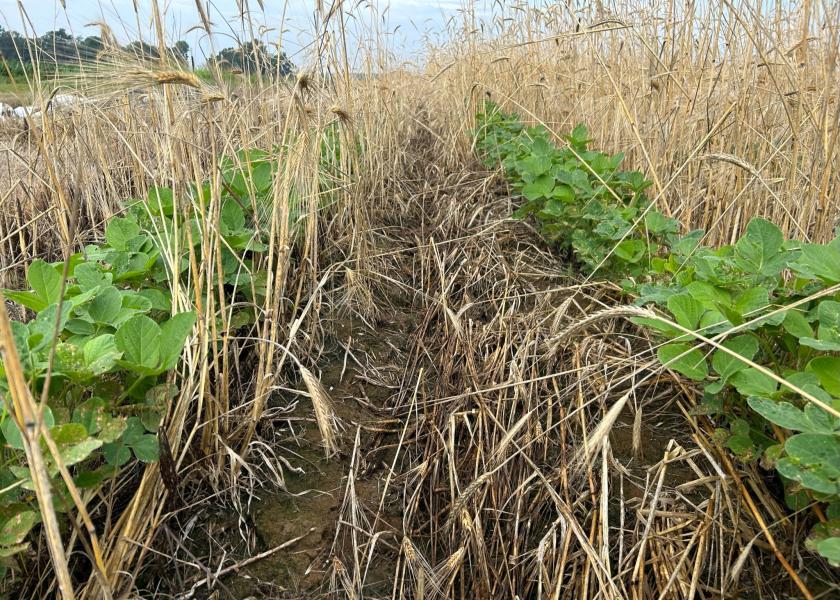Rain Check: How One Arkansas Farmer Banks Moisture

By Jamie Sears Rawlings
As drought sets in and crop conditions continue to deteriorate across the U.S., Adam Chappell says his crop has a leg up. No, he hasn’t had an abundance of rain on his Cotton Plant, Ark., farm. Instead,he says he’s been able to make the most of what little rain he’s received because of his focus on soil health.
It’s the same advantage Jimmy Emmons, a regenerative farmer and senior vice president for Trust In Food, has seen on his Oklahoma farm.
“Once I started improving my soil, I stopped getting just a quarter inch of rain [infiltration] or a tenth like my neighbors,” he says. “Now, when they ask how much rain I got, I can say I got all of it.”
During a recent Soil Regen Farm Hard Field Day in Cotton Plant, Ark., hosted by soil health scientists Rick and Liz Haney, Chappell and Emmons were joined by Keith Scoggins, a USDA-NRCS district conservationist. Each shared best practices to put regenerative systems to work for the sake of yield, profitability and sustainability.
Here are some key takeaways:
Cover crops are key. In fact, Scoggins says they are so critical to soil health he’d rank them higher in priority than no-till.
“I’d rather see someone use covers and till than no-till without covers,” he says.
According to Liz, growers should think of soil as a bank account, with the top layer being a checking account and the bottom layers a savings account.
By using cover crops, Chappell and other regenerative growers are adding to the nutrients (or investments) in their savings accounts at a much higher rate than their checking accounts are diminishing, she explains. Liz calls cover crops a multi-generational wealth of nutrients that consistently add to the soil savings account.
The investments into the soil pay dividends by providing nutrients that conventional growers have to pay to supplement, Emmons adds.
“There’s just no sense in buying nutrients when the soil can give them to you for free,” he says.
Cover crops are a science. Chappell plants soybeans into a dense cover crop. He carefully considers which cover crops will provide the most benefit to his soil underground and aboveground.
Don’t negate plant architecture in the equation, Chappell says, both for the cash crop and the cover crop, always ensuring one plant in a cover crop mixture is large enough to shield the canopy well. The plants that act as a shield will keep both plants and soil biology from drying out. When he measured his soil temperature, Chappell noted a seven-degree difference in his soil and the ambient air temperature.
Know your numbers. Perhaps the most crucial number to know when considering soil health is water infiltration rate, Emmons says. That’s why a simple water infiltration test is important.
Soil health is critical to regenerative practices for farmers, and full-scale adoption of proper soil health practices requires a thoughtful approach and a phased plan.
As Scoggins mentioned to kick off the field day: “When you get your mind right, you start farming with the soil and not against it.”
America’s Conservation Ag Movement can help by providing resources and connections to USDA-NRCS support and funding opportunities for soil health improvements.
As part of Farm Journal's Trust In Food team, Jamie Sears Rawlings focuses on providing more of the information needed to bridge the gap between consumers and the farm-gate and help propel conservation agriculture to the forefront of all conversations.







